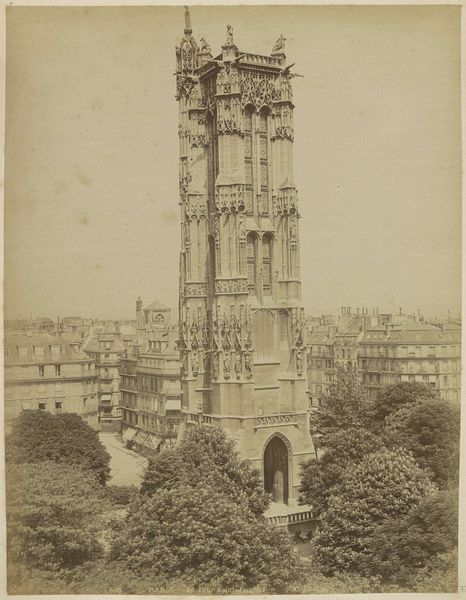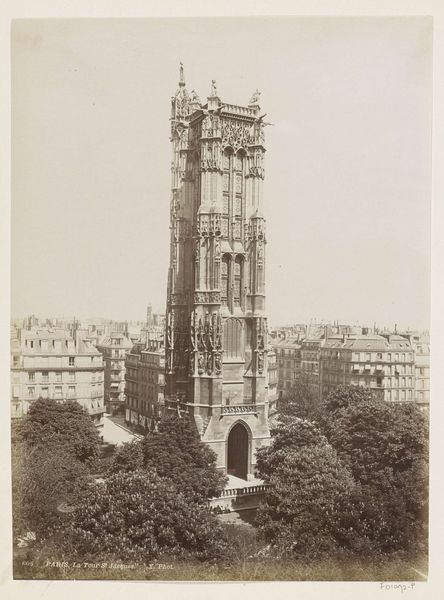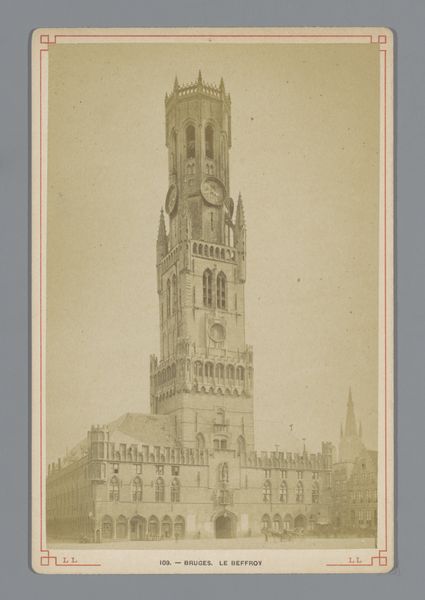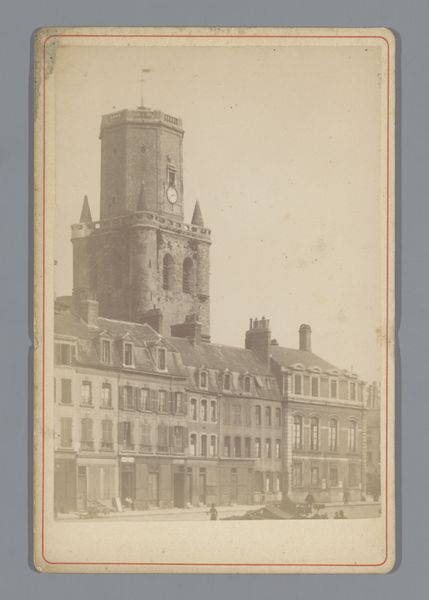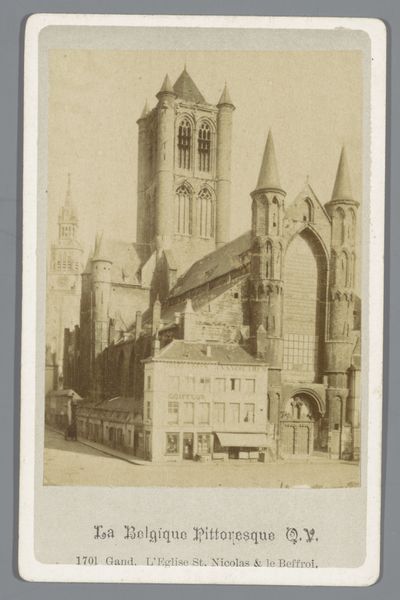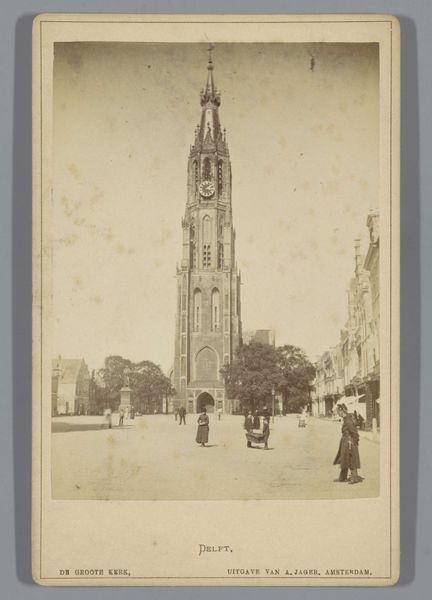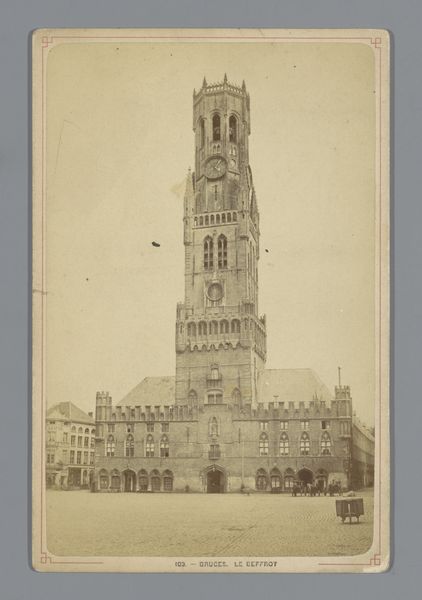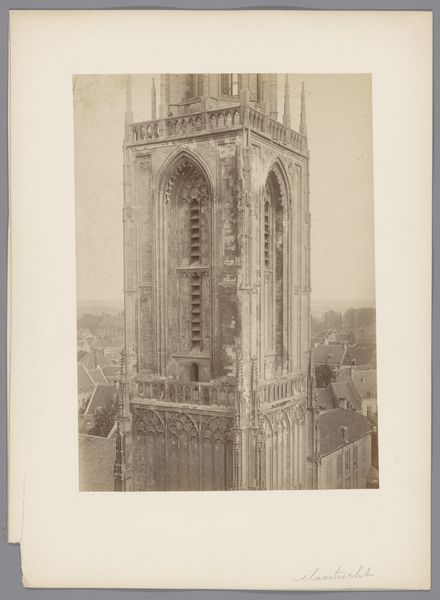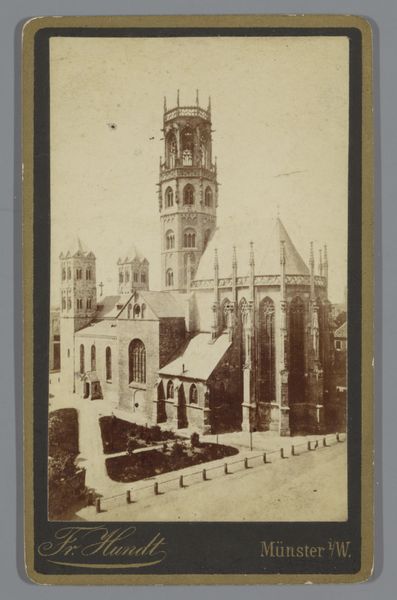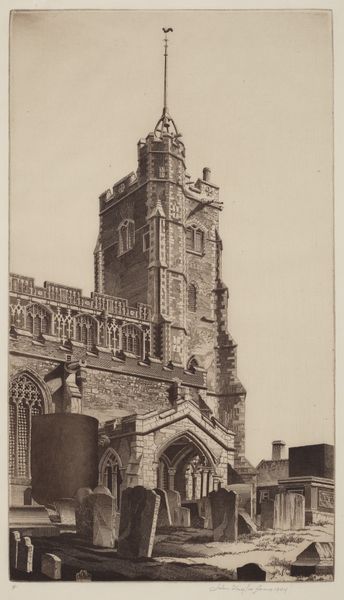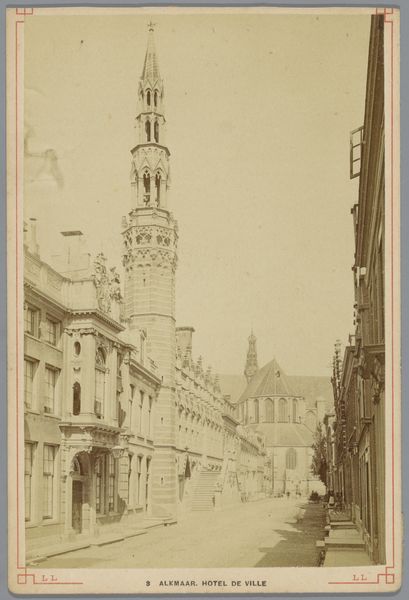
Dimensions: height 163 mm, width 108 mm
Copyright: Rijks Museum: Open Domain
Editor: This albumen print, “Gezicht op de Tour Saint-Jacques te Parijs,” taken sometime between 1860 and 1890 by Ernest Ladrey, depicts a solitary tower. The image has an incredible romantic mood and draws the eye upwards to the steeple. What do you see in this piece? Curator: This photograph, presented in a carte-de-visite format, offers a window into 19th-century Paris. But what narratives are subtly absent? The Tour Saint-Jacques, a remnant of a church destroyed during the French Revolution, stands here. This photograph was produced during a period of intense urban renewal in Paris, largely orchestrated by Haussmann, a project which also drastically reshaped the city’s social fabric. This included the displacement of many working-class communities. Does this photographic celebration of architectural heritage, then, unintentionally obscure those voices? Editor: That's fascinating. I hadn’t considered the urban renewal context. How did photography play a role in that? Curator: Photography in this era wasn't just about documentation, it was also deeply entwined with power. Think about the circulation of these images. Who had access to them? Who was being represented, and who was being erased? Were they a way for a growing middle class to define the look and identity of Paris? Editor: So, it is not only a photograph of architecture, but one of social identity. Curator: Exactly. We must critically examine whose perspectives are privileged in the historical record and acknowledge those silenced in these representations of the city. It's crucial to question how this picturesque scene normalizes certain power dynamics. What do you think? Editor: I appreciate your reading the silences as loud as the subjects! I will consider social erasure moving forward. Curator: Remember, even images as seemingly straightforward as architectural photography can be sites of complex cultural negotiation and societal inscription.
Comments
No comments
Be the first to comment and join the conversation on the ultimate creative platform.
